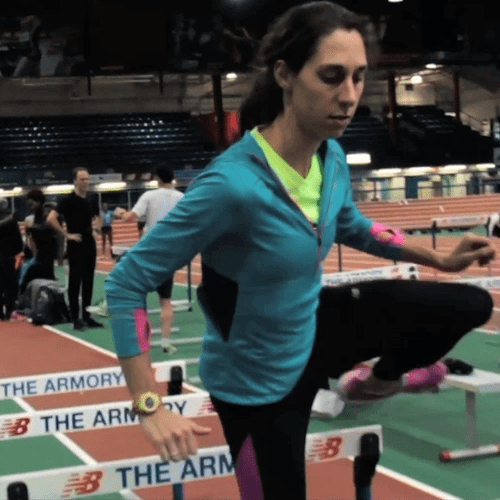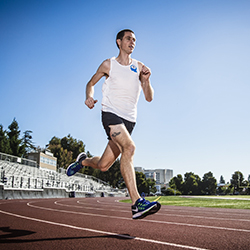Quality picks
- Best Non Gamstop Casinos
- Casinos Not On Gamstop
- Casino Non Aams
- Non Gamstop Casino
- UK Online Casinos Not On Gamstop
- UK Online Casinos Not On Gamstop
- Migliori Siti Non Aams
- Non Gamstop Casino
- Casino Online
- Best Online Casino UK
- Non Gamstop Casino Sites UK
- Non Gamstop Casinos
- UK Online Casinos Not On Gamstop
- Migliori Siti Casino Non Aams
- Best Online Casino Sites UK
- Gambling Sites Not On Gamstop
- Casinos Not On Gamstop
- Casinos En Ligne
- UK Casinos Not On Gamstop
- Betting Sites UK
DO YOU HAVE A QUESTION ABOUT RUNNING? ASK ONE OF OUR COACHES FOR ADVICE.
QUESTIONS & ANSWERS
Raina from OH: Last year I was able to run 6.2 miles without stopping, (average 10 minute mile). Then I got an ankle injury and haven't run for months. How do I build myself back up? How many miles should I start with and at what speed should I increase my mileage?
As you gain fitness you will notice yourself pick up the pace naturally and you can add in more days of running. After you get your volume close to previous levels, you can start to add some interval workouts into your routine. If you enjoy non-running activities such as biking or swimming, you can do those on non-running days to help build your cardiovascular fitness as well. It's important to be patient and not rush back to where you were. It will come with time. Indeed, rushing it may lead to re-injury.
Coach Stephanie Herrick: Welcome back to running! In coming back from your injury I would start by focusing on minutes ran rather than focusing on miles. Start off at an easy effort and try to not worry so much about pace. As you get into better shape a decrease in your average pace will come naturally. For example, you can start off running 20 minutes at an easy pace every other day and increase the amount of minutes run each day by about 5 minutes each week until you get back to the length of time you were able to run last year.
Ian from IN: My coach has been having our team go in the weight room 4 out of the 7 days of the week, and I'm always sore from squating and dead lifting. Is all this heavy lifting seriously impacting my running performance?
Please take the information I have given you and consider what you are currently doing in the weight room. Remember that soreness after lifting is part of the process because muscles have to be broken down to be build up again stronger. However you must also make sure to recover too, so your muscles can rebuild. If anything does not make sense or you continue to feel fatigued and sore then you should talk with your coach and express your concern to him or her.I hope this helps. Please feel free to reach out with any more questions!
Finally, how you you lift through the season will vary. For example, you will lift more often in the preseason and then less as the season progresses and runs get harder. In addition, the muscles that you focus on should alternate during the week. For instance, you shouldn't focus on legs everyday.
Coach Patrick Hammond: Thanks for reaching out to us with your question. Lifting and core work has a time and place in running, however it is important to know when that is as well as your limits. If you are a sprinter or even middle distance runner you may spend more time in the weight room than if you are distance runner. Also the type of lifting you do will be different because a sprinter will focus on explosive and fast twitch muscles while a distance runner will focus on slow twitch. Also, distance runners may lift less weight with more reps while sprinters may lift heavier weights and less reps.
Emily from OH: I have been running consistently for about 4 years (3-4 runs per week, anywhere from 2 to 4 miles) and I am becoming discouraged because I am stuck at a slow 12min mile pace. I'm 5' 5", female, 140 lbs, and in good shape otherwise. What should I do?

Coach Stephanie Herrick: Great question Emily! In order to progress in fitness it important to incorporate a variety of exercises in your routine. It seems that your body has become used to running 12 minute pace per mile on your runs, and that as a result, you have plateaued in fitness. Adding some speed work to your routine may help you improve in fitness. Start out by dedicating one of your runs per week to speed work. After about two weeks of that, try two days of speed work per week. Examples of a speed work include hill repeats, intervals, and fartlek and tempo workouts. Introducing your body to faster running in small intervals will increase your fitness at a much faster rate and will help you drop your average running pace.
Micah from CO: What should I be thinking about when running downhill? I'm training for a road half marathon that has a ton of elevation gain, but also a lot of elevation loss. Any suggestions for training to prepare for so many road hills?
Coach Wilfredo Benitez: One of the best ways to train for a hilly race is to include hills in your training. A good start is to run hill repeats 1-2 times a week. Be sure to run these workouts with proper uphill and downhill running form (e.g. do not bend your back forward too much uphill or lean too far back on the downhill). If your goal is to improve your time, one thing to note is that you want to carefully speed up during the downhill sections. It's okay to allow your body to naturally speed up with gravity, but running too fast downhill can really take a toll on your quadriceps, and you don't want your muscles to be too tired for future uphills.
Joe from WI: I run cross country and it really is a mental sport. How should I best pace myself during and 5k, and how do I push myself mentally and physically during a race and during workouts?
In regards to pacing for a 5k, it's best to put together a race plan ahead of time based on the following factors: terrain of the course, your competitive goals (Do you want to set a personal best? Is it the right time for that?) the significance of the race, your current fitness level, and weather.
Coach Patrick Hammond: You are correct to say cross country is a mental sport. Like many runners, you have probably heard the phrase, "Running is 90% mental and 10% physical," but how much time do you actually spend on mental training? I suggest you implement daily imagery sessions to train your mind and build mental toughness. The basic idea is to imagine or visualize yourself in certain scenarios. Since you asked about mental toughness during races and workouts, you should spend some time visualizing yourself in stressful race day and workout situations.
Try to really put yourself in the moment and think about what you feel, see, hear, taste, and smell. Most importantly, try to associate positive feelings with your visualizations. Practice this daily for five minutes at a time. The ultimate goal is to build mental toughness by associating positive feelings with stressful race day and workout situations. Keep in mind that this mental exercise does not replace physical exercise, it enhances it. Therefore, you must continue to do your workouts and listen to your coach. If you would like professional guidance on this, consider purchasing our Mental Training Product. I have a Masters Degree in Sports and Performance Psychology, and I am trained to lead mental training sessions.
Evan from PA: I am long distance runner at my high school, and I run the 3200m and 1600m. I want to get faster at these event, and recently started spinning, which I think has helped. How else can I get faster in these events next season?
After several weeks (4-6 at least) of building your base, you should incorporate tempo runs into your workout, as they will help you build speed. Also, don't ignore core and strength exercises! A strong, though not necessarily muscular, core, back, and arms goes a long way for efficient running mechanics. Lastly, don't ignore warm up and cool down routines. Dynamic and static stretches are important for optimizing your performance.
Coach Wilfredo Benitez: Having a really strong base will help you with the kind of speed you'll need for the endurance events your run. Since you are a high school runner with a coach or multiple coaches, you should follow their guidance. You should, however, be aware of the following information, and if you aren't you may consider having a conversation with your coach(es) about it. As a 3200m runner, you should include runs as long as 5-7 miles, and maybe even a 10 miles, during your base-building phase.
Dan from NY: How many calories should I be eating in a day? I'm at about 118 pounds and 65 inches tall. I feel like I'm underweight and not getting enough calories. I usually run about 35-40 miles per week, and I haven't been as fast as I've been in the past, but close.
Coach Oliver Lopez: Hey Dan, so I assume you are 18-30 years old for this answer, though if you aren't please notify us. I also estime that you currently consume 2300 - 2700 calories daily. This would make your current BMI 19.6, which is considered normal, but lean. If you feel you are not running your best, or if recovery seems lackluster, you would may benefit from increasing your daily calorie intake. It doesn't need to be a big jump; try adding another 300 calories in the form of a snack, or by increase the portion size of one of your meals. Hope this helps Dan, please continue to ask questions!
Marissa from CA: I have shin splints and I'm in season slready so I really don't have time to rest and wait for them to get better, so I was wondering if there is any other way to make the pain subside and/or prevent further damage?
Second, you should check to see if you are over-striding when you run. If your foot lands in front of your body, as opposed to underneath it, when you run, then you are over-striding, which stresses your shins. Try shortening your stride and landing underneath your body when you run. Third, you should make an effort to run on soft ground. Get off the concrete and run on grass, dirt, gravel, or rubber track. If you run on softer ground, there is less shock to your body from impact. Fourth, you may need a new pair of running shoes. Old shoes do not absorb shock well, which means your legs have to absorb more. Lastly, wearing compression sleeves during your run can help to keep your muscles closer to your bones, which prevents jarring movements and cuts down on soreness. And wearing them after a run promotes blood flow, which helps you recover. I hope this helps. Good luck with your season!
Coach Patrick Hammond: Shin splints are an overuse injury that puts a damper on your running, as you already know. Don't worry, though, as you can beat them with some work. First, I suggest starting a recovery routine for your calf and shin. Here's a calf routine I often recommend to athletes: Using a handheld roller, roll back and forth along your calf muscle for 30 seconds to promote blood flow. Next, inch along your calf with the roller until you hit a knot or feel a slight discomfort. Once the roller is on your knot, pause and apply pressure for 20 seconds.
Then, knead the knot for 20 seconds, and do the same with the next knot. Repeat this routine with your other leg. Often a tight calf can put strain on your shins, so that's why you should make an effort to help your calves recover. Here's a shin routine I often recommend to athletes: Sitting down in a chair flex your foot up, to activate the muscles on the front of your leg. Move a handheld roller gently along these muscles for 30 seconds. Only push as hard as you can handle.
Kaden from UT: I need to get my 110 hurdle time down from 16:34 to at least below 15:55 this season. Any tips?
Then, add the tops of the hurdles back on to practice with the full hurdle. If you don't already work on your general strength in the weight room I would also recommend adding it into your routine. This will help you work on your overall strength, speed, and explosiveness.

Coach Stephanie Herrick: I would spend my time working on hurdle technique and improving rhythm between hurdles. This may help you shave off those last few tenths of a second from your time. Make sure you do hurdles drills several times a week. To improve your speed and rhythm between hurdles you can practice on mock hurdles. Set up the hurdles on a track on the correct marks for the 110m hurdle race, and then remove the top of them. Practice perfecting the 3 step rhythm between hurdles without worrying about clearing the hurdle.
Amy from MD: How different should training pace verses race pace verses fastest pace be for a beginner runner?
///VIEW ANSWER///
Coach Herbert Plummer: Great question. There are lots of "pace calculators" out there that can you give you an approximation of what your race pace should be, whether it's a marathon or a 5k, but what if you haven't done a race yet? For beginners, I like to forget about numbers and focus instead on going by feel. Think of your body as having a three speed bike right now. Easy, medium, and hard. Your "training" pace should be easy, your "race pace" medium, and your "fastest" pace hard.
Of course, your training should incorporate all 3 of these speeds at some point to get you familiar with race pace and develop your speed. This is where a coach comes in handy! Balancing these various efforts to produce the best outcome is the art of coaching. Stick to these 3 speeds right now and after a while you'll be ready to upgrade to a six speed bike, one with more specific paces somewhere in between easy, medium and hard. Hope that helps!





